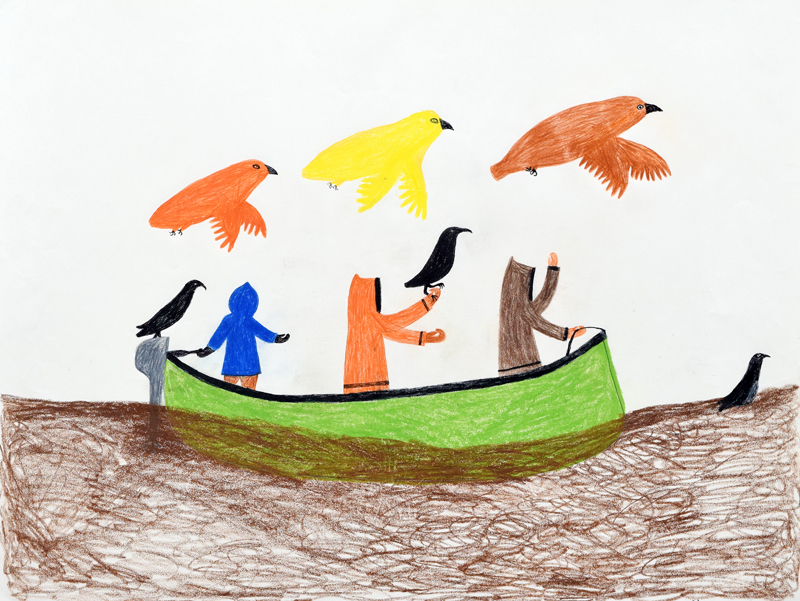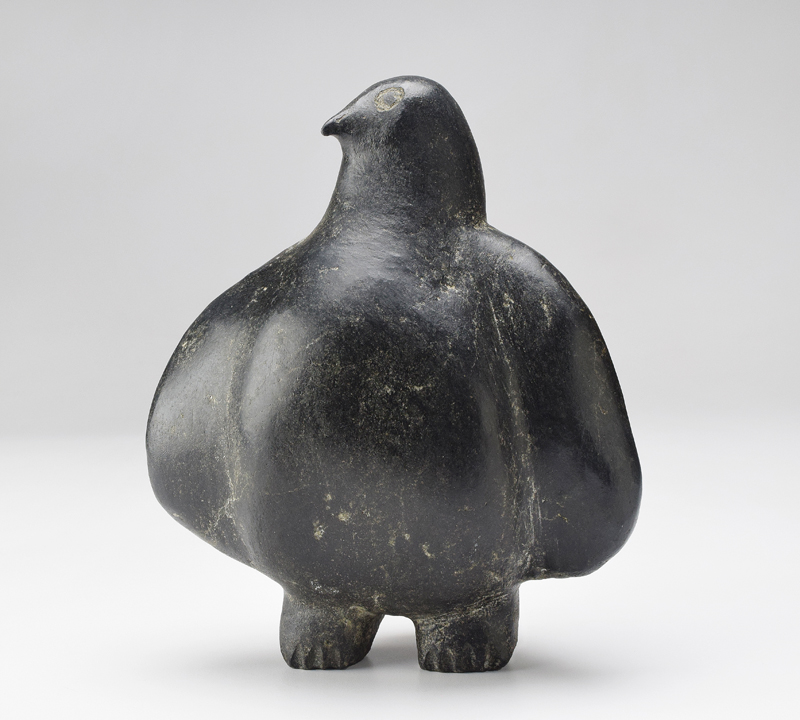Profile: Lucy Qinnuayuak

Marion Scott Gallery is pleased to present an online profile featuring a selection of works by Kinngait’s Lucy Qinnuayuak (1915-1982). A leading member of the acclaimed first generation of Inuit artists who collectively pioneered drawing and printmaking in the 1960s and 1970s, Qinnuayuak’s colourful images of life on the land are each marked by a joyful spirit, exuberant dynamism and graphic power.
Birds are the most common theme in Qinnuayuaks’ work, and they appear in virtually every image. In Happy Birds, a stonecut print from 1979, Qinnuayuak presents an image of an owl with a large head, silhouetted wings and flaring tail feathers flanked on either side by an alternate avian species rendered in the same green and yellow tones. Spirit of the Birds, a stonecut from 1980, expresses the idea of unity of species even more directly: here, the forms of what appear to be either ravens or gulls sprout from the sides and head of a giant owl, their outlined shapes almost indistinguishable from the latter’s wings. In Ravens Disturbing Ducks, a near-monochromatic stonecut from 1966, the silhouetted forms of the various birds are joined by beaks and legs, creating a choreographed image of movement and connectivity.
Each of the coloured pencil drawings in the profile similarly feature birds, often shown in the company of humans. In an untitled drawing from 1980, Qinnuayuak portrays three Inuit boaters in hooded garments standing in a green vessel powered by an outboard motor. As they proceed through the swelling water, the humans are literally surrounded by birds: some of the creatures are flying in the air directly overhead, while others are in the water or onboard the boat. One bird is even perched on a person’s outstretched hand. Another smaller drawing, from 1982, articulates a view of northern life in which humans and birds live parallel to one another. In the image’s top half, a woman and two men stand and sit in front of a blue house with a smoking chimney. In the composition’s lower half, two colourful birds with webbed feet and long feathers with orange tips face one another, as though they might be performing in midair.
Although Qinnuayuak is known principally for her drawings and prints, the profile includes a rare early stone sculpture depicting a standing bird with its wings spread partly open. Despite the sculpture’s powerful volumes, the creature’s erect form and alert stance produces a strong silhouette, reflecting the essentially graphic nature of Qinnuyuak’s sensibility and vision.

Lucy Qinnuayuak
untitled (bears, owl & mother & child), 1980/1981, coloured pencil on paper, 19.5 x 26 in.

Lucy Qinnuayuak
untitled (people in kayak with birds), 1980/1981, coloured pencil on paper, 20 x 26 in.





